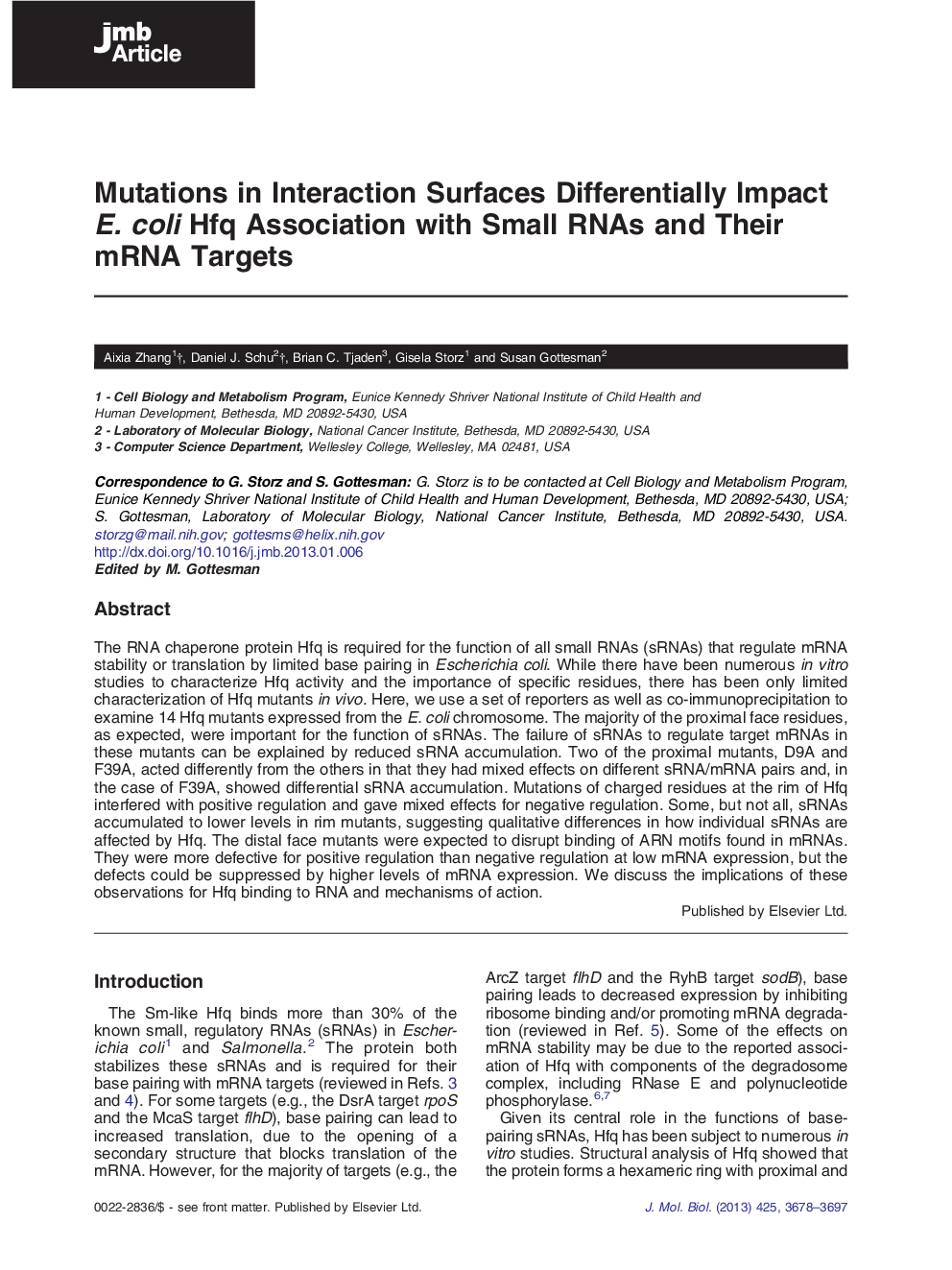| کد مقاله | کد نشریه | سال انتشار | مقاله انگلیسی | نسخه تمام متن |
|---|---|---|---|---|
| 2184572 | 1095886 | 2013 | 20 صفحه PDF | دانلود رایگان |

The RNA chaperone protein Hfq is required for the function of all small RNAs (sRNAs) that regulate mRNA stability or translation by limited base pairing in Escherichia coli. While there have been numerous in vitro studies to characterize Hfq activity and the importance of specific residues, there has been only limited characterization of Hfq mutants in vivo. Here, we use a set of reporters as well as co-immunoprecipitation to examine 14 Hfq mutants expressed from the E. coli chromosome. The majority of the proximal face residues, as expected, were important for the function of sRNAs. The failure of sRNAs to regulate target mRNAs in these mutants can be explained by reduced sRNA accumulation. Two of the proximal mutants, D9A and F39A, acted differently from the others in that they had mixed effects on different sRNA/mRNA pairs and, in the case of F39A, showed differential sRNA accumulation. Mutations of charged residues at the rim of Hfq interfered with positive regulation and gave mixed effects for negative regulation. Some, but not all, sRNAs accumulated to lower levels in rim mutants, suggesting qualitative differences in how individual sRNAs are affected by Hfq. The distal face mutants were expected to disrupt binding of ARN motifs found in mRNAs. They were more defective for positive regulation than negative regulation at low mRNA expression, but the defects could be suppressed by higher levels of mRNA expression. We discuss the implications of these observations for Hfq binding to RNA and mechanisms of action.
Graphical AbstractFigure optionsDownload high-quality image (241 K)Download as PowerPoint slideHighlights
► In vivo analysis of 14 chromosomally expressed hfq mutants reveals differential consequences of specific amino acid substitutions.
► Phenotypes confirm a critical role for the proximal face of Hfq in sRNA binding.
► The rim of the Hfq hexamer is important for positive regulation by sRNAs.
► Individual sRNA:mRNA pairs show different sensitivities to hfq mutants.
► The results suggest unexpected complexity in how Hfq promotes sRNA-based regulation.
Journal: Journal of Molecular Biology - Volume 425, Issue 19, 9 October 2013, Pages 3678–3697